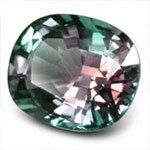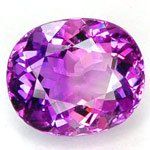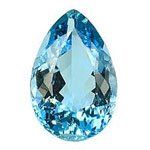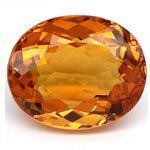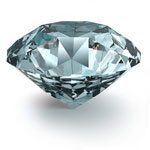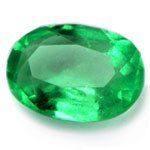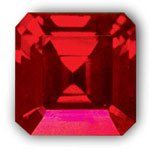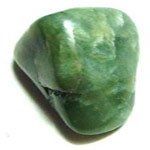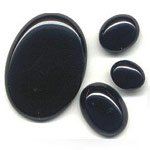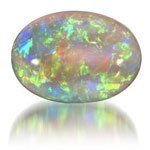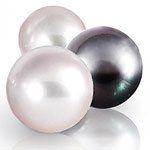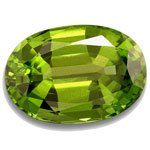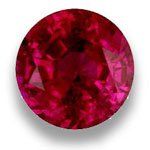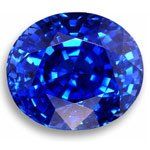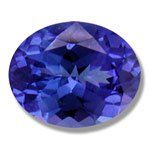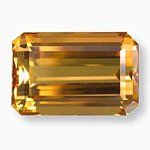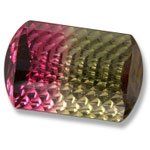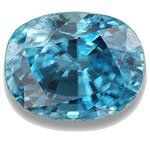GEMSTONE GUIDE
ALEXANDRITE
Changes from green to red, mauve or brown in incandescent light. Alexandrite has a hardness rating of 8.5. There are many many synthetic alexandrites on the market. Natural alexandrite is very rare. Alexandrite is found in Brazil, Madagascar, Myanmar, Russia, Sri Lanka and Zimbabwe.
AMETHYST
Purple quartz and is one of the most popular gemstones. It varies from pale lavender to deep purple with red highlights. Amethyst is generally abundant and quite inexpensive. Amethyst is purple, lilac or mauve. The highest quality is transparent. It has a hardness of 7.
CITRINE
Yellow to brown quartz. It varies from pale yellow to rich golden yellow to dark orange. Although citrine may occur naturally, much is produced by heating amethyst under controlled conditions. Darker colors are more highly prized, including medium golden orange ("Rio Grande" citrine) and dark sherry-colored ("Madeira" citrine).
DIAMONDS
Slightly yellowish, and in this general color range, those most approaching absolute lack of color are most prized. However, brightly colored diamonds are much rarer and more expensive. The deep blue Hope diamond and blue Eugenie diamond, both in the Smithsonian collection, are among the most famous examples. It has a hardness of 10.
EMERALDS
Medium to dark green beryl which derives its color from chromium and vanadium. Emerald has a hardness rating of 7.5. of fine color and clarity can be quite expensive. The best known sources include Colombia, Zambia. Almost all emeralds contain numerous small inclusions and fractures that promote fragility. Most stones on the market are impregnated with oils, waxes, or other substances to mask the fractures and sometimes enhance color.
GARNET
Typically dark brownish to purplish red and usually cut in small sizes (under 2 carats), as larger stones appear black. Garnet ranges in color from colorless to black though it is often thought of as only red. There are various types of garnet with the hardness ranging from 7 - 7.5.
JADEITE
Rare and the highest quality is known as imperial Jade. Jadeite comes in many colors: red, yellow, green, lilac, black, orange, white, pink, blue and brown. Jadeite has a hardness of 7. Nephrite Jade is more common and is often used in Chinese carvings. Nephrite Jade comes in various tones of green -- mostly with an olive green tone. It has a hardness of 6.5.
ONYX
Rich-looking, affordable black stone. It is often mixed with pearls to create elegant jewelry. Onyx, sard, and sardonyx are all varieties of chalcedony (microcrystaline quartz). Onyx comes in brown, white, grey, and black. Sard is a reddish-brown variety. Sardonyx is a blend of sard and onyx with the red bands of sard and the white bands of onyx. Onyx, sard and sardonyx all have a hardness rating of 7.
OPAL
Large sizes are rare and costly, especially black opal. Usually cut as cabochons, sometimes beads. Occasionally found as fossilized (opalized) clamshells, snail shells, or wood. Transparent opals, such as Mexican red or orange fire opal, are often faceted. Values are normally determined by the presence and nature of color flashes (play of color). Opal's scratch hardness is measured at 6.0 to 6.5 on the Mohs' scale, similar in hardness to quartz, a little more than halfway between the hardness of talc and diamond.
PEARLS
Formed in shellfish, as a reactant to an irritant such as a piece of sand. Cultured pearls are created by adding a piece of mussel or shell inside of an oyster of mussel. This then creates a pearl as layers of the inside of the shell grow over the added substance. The price of pearls vary widely as a result of luster, size, how they were grown, color and type. Natural pearls are the most expensive, followed by cultured pearls. Fresh water pearls tend to be relatively inexpensive. Pearls are generally white, brown, silver, cream, black or pink depending on the type of shellfish and water. Pearl has a hardness of 3.
RUBY
Mmay be any color of red depending on the chromium and iron content of the stone. Ruby has a hardness rating of 9. Generally, ruby is quite durable. Still, rubies are subject to chipping and fracture if handled roughly. Ruby is found worldwide. The finest stones are from Myanmar. Bright red stones are mined in: Afganistan, Pakistan, Vietnam. Brownish-red rubies are from Thailand. Darker stones are generally produced from the mines in Australia, India, Russia and USA (Georgia, North Carolina and Wyoming).
SAPPHIRE
From the mineral corundum. All gem quality corundum that is not red is called sapphire such as blue, orange, yellow, violet, green, white and pink. Unless a color is stated, sapphire is assumed to be blue. Some sapphires (color change sapphires) will change between blue and violet depending on the light. Sapphire has a hardness of 9. Generally, sapphire is quite durable. Still, sapphires are subject to chipping and fracture if handled roughly.
TOPAZ
Comes in many colors such as blue, yellow, pink, brown, green and clear. Orange-red "Imperial" topaz is rare. Topaz has a hardness of 8. As with all gems, protect topaz from scratches and sharp blows.
TOURMALINE
Comes in many colors such as blue, yellow, pink, red, black, green and clear. It has a hardness of 7.5. As with all gems, protect tourmaline from scratches and sharp blows.
ZIRCON
A natural stone - not to be confused with Cubic Zirconia which is manmade. It is known as a colorless stone used to imitate diamonds but also comes in: blue, yellow, orange, red, brown and green . It has a hardness of 7.5. Zircon is somewhat soft so avoid scratches and sharp blows. Avoid hot water and household chemicals.

